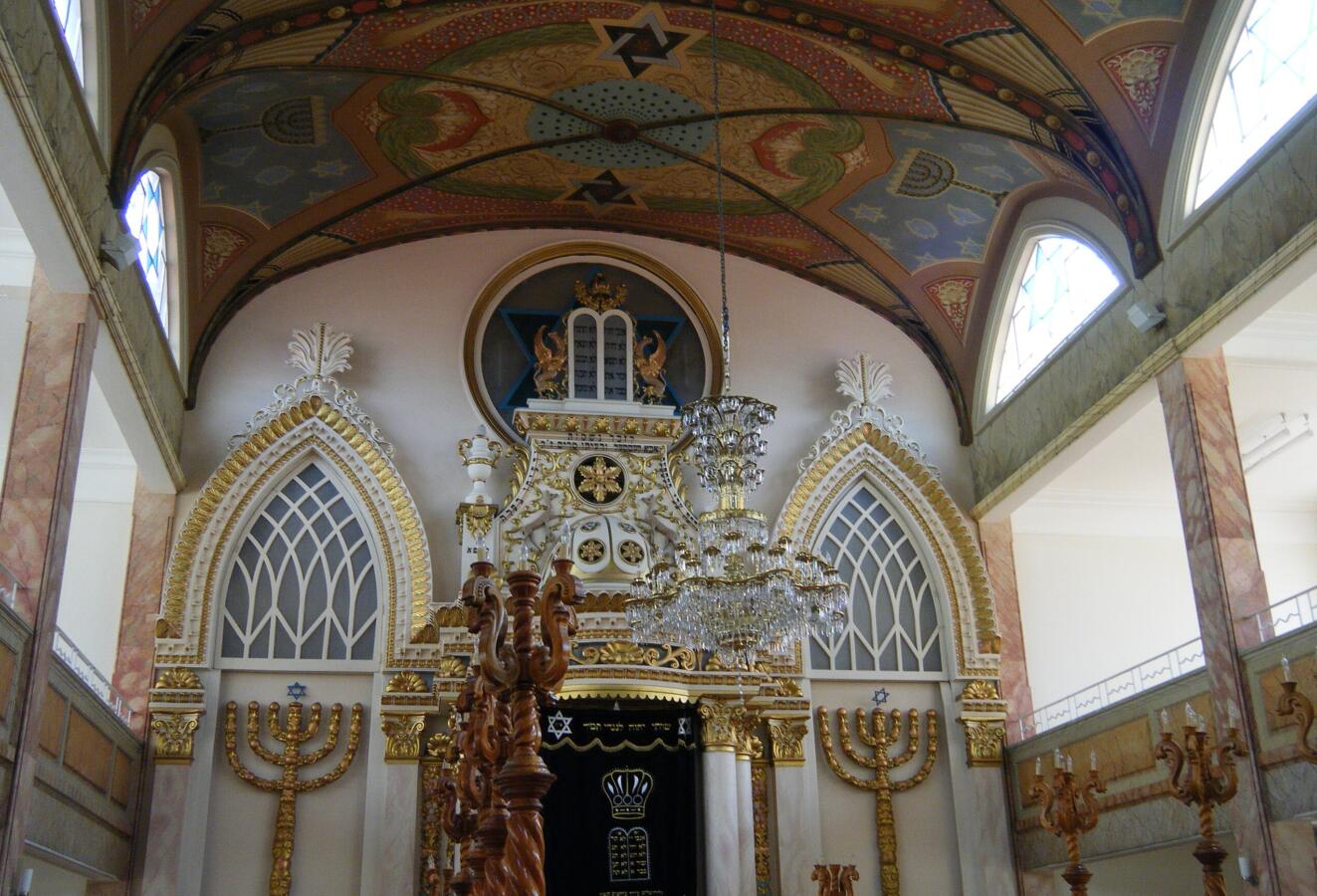The oldest documents in the American Jewish Historical Society’s collections are trial transcripts of the Mexican Inquisition of the 1570s. For centuries, Mexico had a reputation for trying to purge Jews and Jewish influence from its culture. With the creation of the Mexican Republic in 1856, however, the Mexican government ended official discrimination against religious minorities and separated the Catholic Church from affairs of state. In 1887, while thousands in the Jewish communities of Russia were killed in pogroms and the ports of northern Europe filled with Jewish families hoping to escape to America, Mexican President Porforio Diaz announced that his administration would welcome 5,000 Russian Jews if they would settle terrenos baldios — government owned, uncultivated lands. A Mexican newspaper, El Partido Liberal, editorialized, “Would Jewish colonization increase the wealth of the Mexican nation? If so, let them come.”
Concerned for the plight of Russia’s Jews and thinking it urgent to divert European Jewish emigrants from the tenement districts of great cities to agricultural settlements in less populated areas, America’s leading Jewish philanthropist, Jacob Schiff, and the Baron Maurice de Hirsch of France viewed Mexico as a promising site for Russian Jewish resettlement. De Hirsch had already created a fund to bring European Jewish immigrants to American ports such as Galveston, Texas, from which they departed to rural homes in Arkansas, Kansas, North Dakota, and other states. The fund also encouraged Jewish settlements in Argentina. De Hirsch wrote, “I must admit that the proportions which the emigration of Russian Jews has assumed, and the excessive immigration which begins to make itself felt in the United States, makes it incumbent upon us to look around for new outlets for the colonists.”
Because of its government’s welcoming attitude, de Hirsch and Schiff grew optimistic about Mexico. Remarkably, de Hirsch contemplated resettling every Russian Jew to Mexico. He wrote:
No doubt if it were only a question of transporting a limited number of colonists, the moneys needed would be found . . . but having to face eventually a colonization scheme which may embrace a population of five million souls (distributed, I must admit, over a great number of years), we must take care so that capital which is in good faith invested [will receive a good return].
Schiff agreed with de Hirsch on the need to assure the viability of Mexico as a refuge and personally hired two investigators to assess the practicality of massive Jewish immigration to that nation. Three months later, Schiff received the results of the research and wrote to de Hirsch:

Help us keep Jewish knowledge accessible to millions of people around the world.
Your donation to My Jewish Learning fuels endless journeys of Jewish discovery. With your help, My Jewish Learning can continue to provide nonstop opportunities for learning, connection and growth.
Just received information on wages and labor conditions which do not seem very satisfactory. All wages are very low and the competition for [jobs as] skilled labor in the lower strata of the population is rather keen. This rather speaks against Mexico.
Schiff and de Hirsch then turned their attention back to resettling Jews in the American West and Argentina.
Despite Schiff’s negative assessment, the Diaz government persisted in its hope to attract Jewish settlement to Mexico. Diaz offered to donate an island off the coast of Mexico as a semi-autonomous Jewish colony. Writing in his newspaper, El Sabado, in 1889, Professor Fernando Rivas reflected his nation’s official position:
We do not know why Jews would remain in any country where they are suspected, hated and persecuted. Why not emigrate to his generous America where hospitality invites them . . . Mexico opens its ports to European, Asiatic or African immigration with neither racial nor religious distinction. Here the Church is independent of the State and there is absolute liberty of religion . . . Let the persecuted leave the inhumane lands and come to the land where the Eternal has planted the Tree of Liberty.
Despite such generous offers, the organized North American Jewish community expressed continuing reservations about Mexico as a place for resettlement. Rabbi Martin Zielonka of El Paso, Texas, on the Mexican border, wrote, “The establishment of a [Jewish] colony in this desert territory would be the same as exile . . . [and] I question very much whether the Jews of Europe could readily adapt themselves to the agricultural conditions of the eastern lowlands.” Social worker Maurice Hexter thought Jewish immigrants would face “the impossibility and danger of competing with peon labor” and “the danger of banditry in the countryside.”
Equally tellingly, Jewish hesitation arose in response to the Mexican Catholic Church’s open hostility to a massive influx of Jews. In 1889, a Catholic political party representative characterized the possible introduction of non-Catholic immigrants from Europe “a social crime.” Rabbi Zielonka observed, “The hand of the Inquisition still hangs heavy over Mexico and the word ‘Jew’ is only whispered here and there.”
Despite these concerns and impediments, some 9,000 Eastern European and German-speaking Jews emigrated to Mexico between 1887 and the 1930s, where they and their descendants have lived in peace and relative prosperity. One can wonder, with the wisdom of hindsight, whether Schiff, de Hirsch and other organizers of Jewish rescue — had they been able to predict the fate awaiting Russian Jewry in the 1920s and 1930s — might have accepted the Mexican government’s offers and taken their chances with Mexico’s weak economy and its church’s attitude toward Jews.
Chapters in American Jewish History are provided by the American Jewish Historical Society, collecting, preserving, fostering scholarship and providing access to the continuity of Jewish life in America for more than 350 years (and counting). Visit www.ajhs.org.




